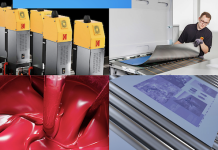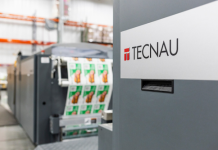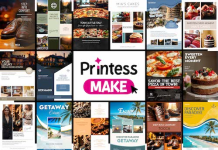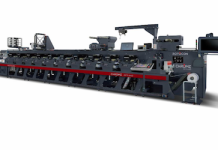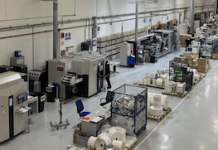The potential of digital print is broadening, and packaging companies are only just beginning to realise the benefits on offer. This article appears in Africa Print Journal.
The rapid growth and success of digital print are prompting brands to experiment with marketing – improving approval ratings and brand loyalty from consumers – as well as meeting new regulatory demands and evolving new business models.
According to Smithers Pira's new report, The Future of Digital Print for Packaging to 2022, digitally printed labels and packaging was worth R174 billion ($13.4 billion) in 2017. While the label sector has been the early adopter and is mature in some regions there is very strong growth in corrugated, carton, flexibles and direct-to-shape, with developments in metal printing.
By 2022, the rapidly expanding digital (inkjet and toner) packaging market will grow by almost 13% annually to exceed R286 billion ($22.0 billion). The market for digital print is expanding at over 15% for all formats – except labels where it is already well-established. Digital print platforms are opening up a world of possibilities for boosting emotional engagement with a consumer, and creating new revenue streams.
This is allowing brands, design agencies and retailers to become more creative, with many launching innovative campaigns to enhance approval ratings; while other businesses across the value chain can evolve new, lucrative business models.
Smithers Pira identifies the key drivers that are making digital print such an attractive option:
Economic Short Runs
As with most print products, the average run length for packaging jobs is decreasing. Analogue processes are well suited to minimise the costs of long and medium runs that used to account for the bulk of pack and label work.
This situation is changing with more fragmentation and versioning, as new small businesses and boutique retailers join the market. There are many more short runs and high prepress and finishing costs, often added as a 'one-off' charge when an initial order is putting off some new designs and products.
The ability for digital to produce short runs economically has changed the label sector and it will do so for other parts of the packaging market. Eliminating the minimum order quantity will open high-quality packaging and labels to many more players, and grow the overall market significantly.
Digital is well suited to short run production, as there are no plate costs. Using online web-to-pack portals is reducing administration and prepress costs for producing press-ready artwork and will further boost the acceptance of digital labels and packaging in the future.
Read more in the latest edition of Africa Print Journal.



